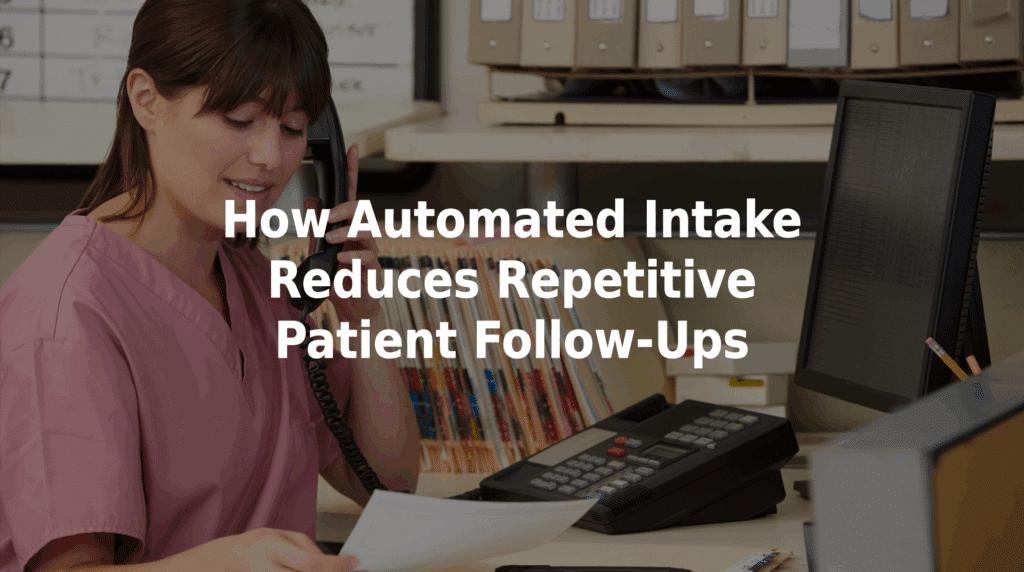How Automated Intake Reduces Repetitive Patient Follow-Ups
One of the most common points for miscommunication in health care is the intake process. Patients find that their information is not completely documented, or that they have to repeat their concerns more than once. Learning how automated intake reduces repetitive patient follow-ups can go a long way to helping managers like you improve care delivery and office efficiency.
The Impact of Repetitive Follow-Ups on Healthcare Operations
When intake processes lack structure or consistency, patients often:
- Call multiple times to clarify their concerns.
- Repeat information to different team members.
- Experience delays in triage and care recommendations.
- Become frustrated with the healthcare experience.
Reducing these follow-ups not only improves the patient experience, but also allows frontline staff to focus on more immediate in-person needs.
How Automated Intake Helps Eliminate Redundant Patient Requests
1. Structured Symptom Collection Reduces Missing Information
AI-guided prompts can gather key information about patients’ symptoms when they first contact a practice.
2. Accurate Routing Avoids Delays
Automation can categorize patient concerns so that they reach the appropriate clinical or administrative team members promptly.
3. Documentation Becomes More Consistent Across Departments
By standardizing your intake process, patients don’t have to repeat themselves when transferred to other team members.
4. Triage Becomes Faster
With clear, complete intake information, triage nurses can improve their response times and accuracy, as well as decrease the chances that patients will have to call back for updates.
Best Practices to Prevent Repetitive Follow-Ups
- Implement AI-Powered Intake: Structured, symptom-specific prompts can help capture all relevant information for triage.
- Provide Self-Service Options for Routine Concerns: Dynamic intake forms let patients submit concerns directly to their providers without having to wait on hold for nonclinical operators.
- Integrate Intake With EHR and Clinical Systems: Look for a HIPAA-compliant solution that shares intake directly with your in-house system to reduce bottlenecks, incomplete patient files, and other inefficiencies.
- Track Communication Metrics: Monitor repeat call rates to identify and address intake gaps.
How MedMessage Automate Reduces Patient Follow-Ups
TriageLogic’s MedMessage Automate reduces repetitive follow-ups by improving intake accuracy and communication flow. Patients submit their concerns through a secure chatbot which guides them on how to self-report their symptoms.
Key benefits include:
- Fewer incomplete messages and follow-up calls to clarify symptoms.
- Reduced administrative burdens on frontline staff.
- Faster, more accurate responses for patients.
- Improved patient satisfaction and trust.
- Scalability for high-volume call centers or clinics.
Make Patient Communication More Efficient and Reliable
Automated intake reduces follow-ups, improves message accuracy, and supports better care delivery. Contact us today to learn more about a program and schedule a demo of MedMessage Automate!

